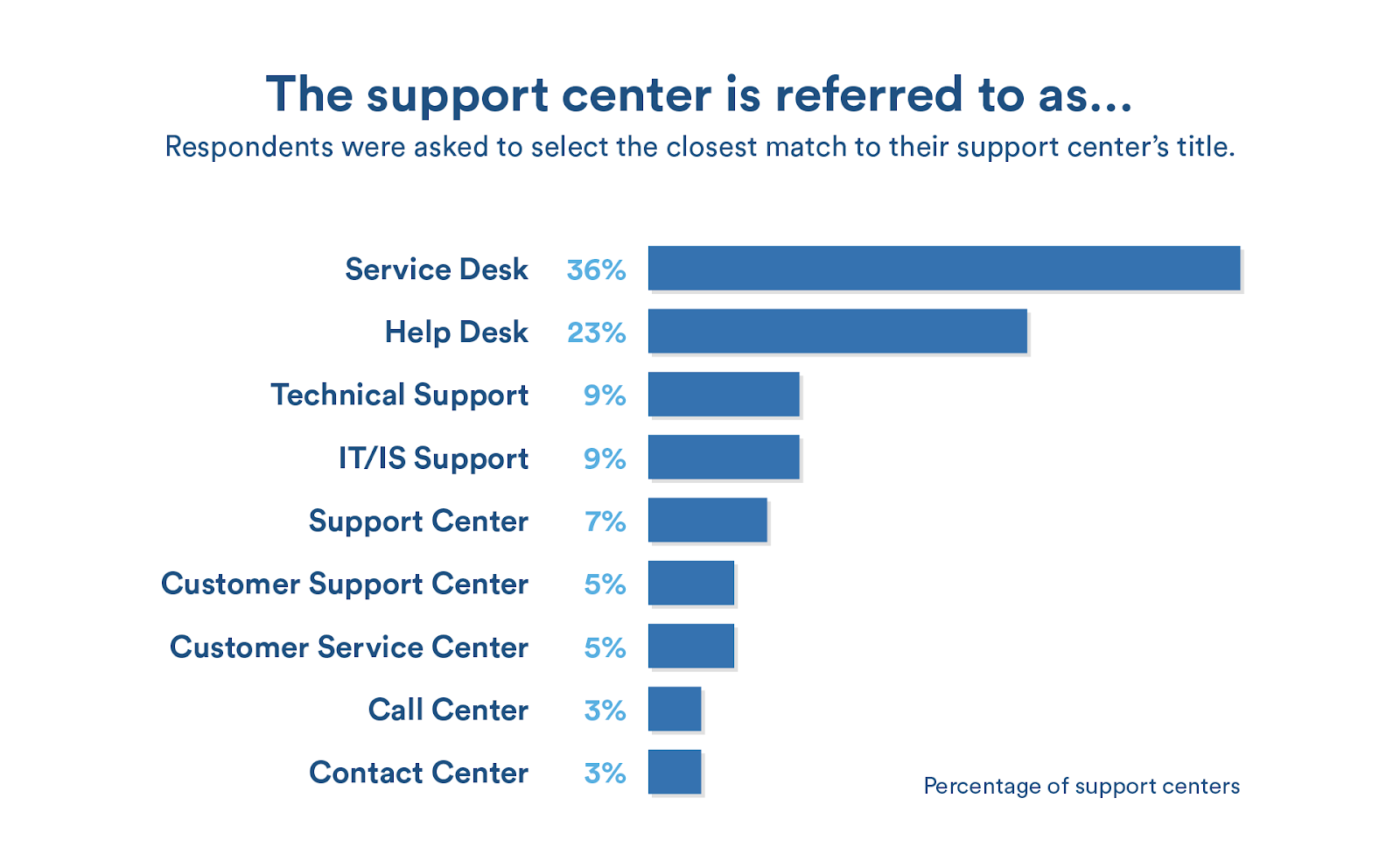ITSM for high-velocity teams
IT service desk vs IT help desk vs ITSM: What's the difference?
IT is full of jargon. It can be hard to keep track of all the relevant processes, frameworks, tools, and acronyms. With all the obscure IT terms floating around in the world, there are three important terms related to IT support that we often see conflated, confused or misused:
- Service desk (or “IT service desk”)
- Help desk (or “IT help desk”)
- ITSM (“IT service management”)
Does it matter if you use the term help desk, service desk, or ITSM to describe IT support? It does – as you might be underselling or overselling capabilities (either to yourself or others) including your IT support technology.
What is ITSM?
IT service management -- often referred to as ITSM -- is simply how IT teams manage the end-to-end delivery of IT services to customers. This includes all the processes and activities to design, create, deliver, and support IT services. The core concept of ITSM is the belief that IT should be delivered as a service.
Due to their day-to-day interactions with IT, people often misconstrue ITSM as basic IT support. On the contrary, ITSM teams oversee all kinds of workplace technology, ranging from laptops, to servers, to business-critical software applications.
ITSM generally consists of several core processes, as defined by ITIL - the most widely accepted framework for or approach to ITSM. Here are just a few of those processes:
- Service request management
- Knowledge management
- IT asset management
- Incident management
- Problem management
- Change management
You’ll notice that some of these processes - like IT asset management, problem management, and change management - fall outside of the scope of basic IT support. That’s because ITSM encompasses all of the activities involved in delivering IT to the business. While the scope of ITSM is broad, service desks and help desks are much more narrowly defined, and only represent smaller pieces of ITSM.
What is a service desk?
ITIL’s definition of a service desk is as follows: “The single point of contact between the service provider and the users. A typical service desk manages incidents and service requests, and also handles communication with the users.”
That definition may seem a little formal and vague, so here’s a simpler way of putting it: A service desk is a communications center where customers (e.g. employees or other stakeholders) can find help from their IT service providers. As the ITIL service desk definition states, this help may take the form of incident resolution or service request fulfillment, but regardless of what type of help is being provided, the goal of a service desk is to deliver high-quality service to customers in a timely manner.
Service desks often also include multiple ITSM activities. For example, a service desk usually encompasses ITSM activities that include service request management, incident management, knowledge management, self-service, and reporting. There are also usually strong links to problem and change management processes.
An IT service desk assists customers with incident resolution or service request management, it creates and manages departmental knowledge, it offers self-service for customers who want to resolve incidents quickly and independently, and it provides metrics on the team and the tool’s effectiveness. Service desks may include more or less than this, but the point is that they are a robust, service-focused, and customer-centric way of delivering help from IT to customers.
What is a help desk?
As defined by Merriam-Webster, a help desk is “a group of people who provide help and information usually for electronic or computer problems.” Given this definition, it may seem at first glance like there is little difference between help desks and service desks, but the key word that’s missing here is “customer.” While the main focus of a help desk is simply fixing issues, a service desk’s main focus is delivering service to its customers or users. There’s a certain emphasis on service delivery and customer-centricity in service desks that’s missing in help desks.
And while help desks are often limited to a single ITSM activity (in particular, incident management or the break-fix process), service desks cover the wider range of activities that were mentioned above. So in a sense, help desks are a subset of service desks.
If you’re still confused about the differences between a service desk and a help desk, don’t fret. It’s true that the distinction can feel a little nitpicky, so we’ve tried to make it clearer by walking through all of the differences between them below.
Service desk vs. help desk: what’s the difference?
- The service desk was an evolution of the help desk, born out of ITSM best practice framework ITIL (formerly known as the IT Infrastructure Library), and based on the underlying concept of “managing IT as a service.”
- A help desk was born of IT-centricity (mainframe computing), whereas a service desk was born of IT service-centricity (the above-mentioned ITIL-espoused approach to delivering IT as a service).
- It might seem petty, but many will say that a help desk provides help, whereas a service desk provides service, i.e. with a service desk there’s a focus on delivering a service to end users with some semblance of customer service.
- A help desk is considered to be focused on break-fix (what ITIL calls incident management), whereas a service desk is there to assist with not only break-fix but also with service requests (requests for new services) and requests for information (such as “how do I do X?”). Although there’s no reason why a help desk can’t also offer these additional capabilities (other than IT terminology trends).
- A help desk was an add on to existing IT activities, whereas the service desk is part of a service-based IT service delivery and IT support ecosystem built around something called “the service lifecycle.” Probably a big reason why the term service desk was used over help desk in ITIL.
- Those versed in ITIL will state that a help desk is tactical, whereas a service desk is strategic. This will, of course, differ across organizations.
- A help desk might be considered as offering a subset of service desk capabilities by some, or be qualified as limited in scope by statements such as “the evolution of help desk to the service desk.”
But of course, one person's help desk is another person's service desk – organizations will call their IT support capability what they want as evidenced by the following HDI research:

We see 41% of help desks and service desks are called something else. Plus, there’s no guarantee that the service desks and help desks reported in this HDI survey align to our descriptions above.
Some would argue that help desk and service desk aren’t that different and, looking into history, the terms were often used interchangeably throughout the 2000s. But the important thing to remember is this: for most, a "service desk" is an evolved version of a help desk created in an ITIL mold.
The importance of service desk and help desk tools
If your team takes the service desk approach, choosing the right service desk software for your organization is critical, as it is a foundation of ITSM. The service desk serves as the interface between customers and the IT team. Of course, features like knowledge management and reporting are critical in a service desk solution, but you’ll also want a service desk that's easy to use and set up, enables collaboration, and adapts to your needs. That way, your IT team can deliver excellent support - and value to the business - quickly.
And even if your team takes the help desk approach, having a tool that helps you keep track of what issues come up and who is solving them is crucial. With a dedicated help desk tool, your IT team can be more transparent, collaborative, and efficient.
Summary
The evolution in both terminology and practice from help desk to service desk illustrates the growing focus on service and strategy in IT. To make that shift to IT as a service, your team needs both the right practices as well as the right tools.
Learn more about how Jira Service Management can support your ITSM needs
Atlassian for ITSM
The basics you need to know about ITSM with Atlassian – across IT delivery, operations, and support, plus best practices and tips.
Get the guideITAM: The ultimate guide to IT asset management
IT Asset Management (ITAM) is crucial for tracking and justifying IT spend. Learn more about the process, its importance, and choosing the right software.
Read this article